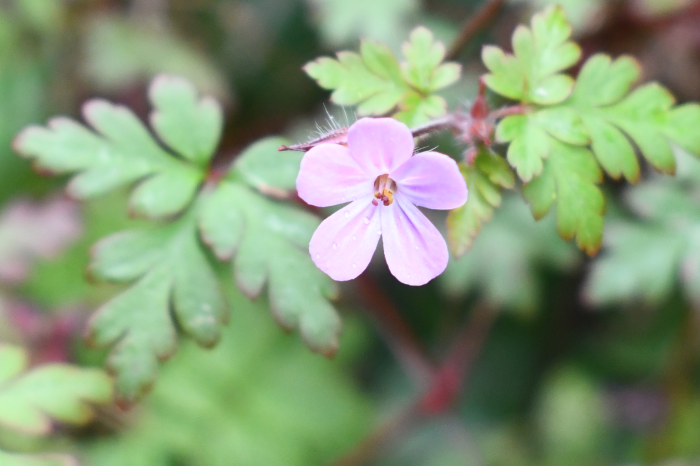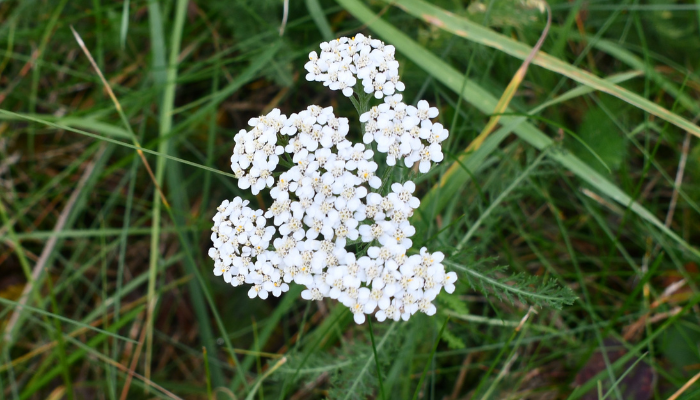20 November 2022
Growing Wild – Yarrow and Herb Robert

Catherine Keena, Teagasc Countryside Management Specialist takes a closer look at some of our native Irish biodiversity to look out for in the countryside.
Yarrow
Look out for later flowering yarrow, sometimes through to new year. It can be identified all year round by its soft feathery leaves with a distinctive smell, which also distinguish it from other small white umbels when flowering. An umbel is an inflorescence that consists of a number of short flower stalks that spread from a common point, somewhat like umbrella ribs. The flat flower heads are accessible and useful for many invertebrates including bees, butterflies and moths. It is also an indicator species of old grassland – part of our native Irish biodiversity.

Herb Robert

Look out for Herb Robert, still flowering into November. It has five pink petals containing lighter pink lines, with orange antlers and deeply divided leaves. Resembling geraniums, common pot plants in many farmhouses, herb robert belongs to the cranesbill family whose fruit have long pointed ‘beaks’ like a crane’s bill. When it dries out, the sound of seeds being catapulted up to six metres away, can be heard. The bright red stems with prominent swollen joints were used as a cure for red water in cattle. Known as crub dearg in Waterford, herb robert is part of our native Irish biodiversity.
See previous Growing Wild articles below:
- Growing Wild – Elderberries and Blackberries
- Growing Wild – Haws and Spindle
- Growing wild – Guelder Rose and Sloes
- Growing wild – Purple loosestrife and Lord and Ladies
- Growing Wild – willowherb and water mint
- Growing Wild – dandelion and greater stitchwort
- Growing Wild – willow, primrose and lady’s smock
- Growing Wild – whitethorn and cow parsley
- Growing Wild – bluebells and guelder rose
- Growing wild – Honeysuckle and Foxglove
- Growing Wild – Elder and Ragged Robin
- Growing wild – dog rose and meadowsweet
- Growing wild – Privet and Lady’s Bedstraw
- Growing Wild – Bird’s foot trefoil and Knapweed
Keep an eye on Teagasc Daily for another Growing Wild later in the month. Learn more from Teagasc about Biodiversity & Countryside
